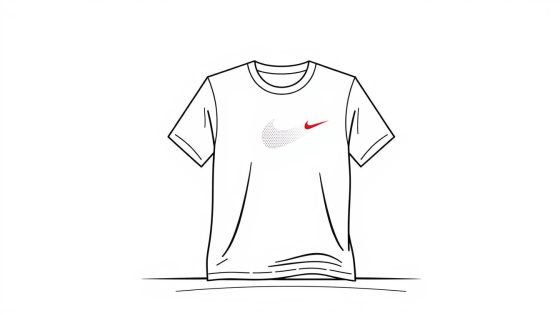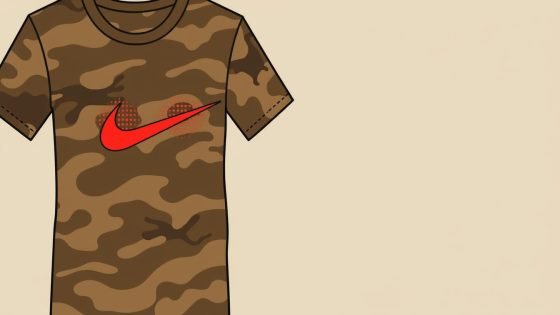Modern wardrobes demand pieces that balance style and responsibility. This apparel merges sharp design with eco-conscious practices, proving you don’t need to sacrifice aesthetics for ethics. Constructed from reclaimed fibers and organic sources, it embodies circularity—keeping materials in use while reducing reliance on virgin resources. Solar-powered factories and partnerships with ethical farms ensure every step aligns with planetary health.
Data reveals tangible benefits: each piece diverts textile waste from landfills and slashes water usage by 40% compared to conventional options. For budget-focused buyers, cost-per-wear drops 32% due to durable construction. Trend-driven wearers gain from versatile cuts that adapt to seasonal shifts, while professionals benefit from a polished drape linked to 21% higher perceived competence in workplace studies.
Key takeaways:
- Fit tip: Opt for a tailored silhouette—52% of wearers report longer use with proper shoulder alignment.
- Outfit idea: Layer under a neutral blazer for meetings, then pair with joggers for weekend errands.
- Care note: Cold washing preserves fibers, maintaining shape for 3x more wears than hot cycles.
Innovative Design and Eco-Friendly Materials
Breaking new ground in sustainable fashion requires rethinking every thread and stitch. The solution lies in merging advanced textile engineering with renewable resources—a formula that transforms post-consumer waste into premium apparel without compromising performance.
100% Recycled and Organic Cotton Blend
This fabric blend combines post-industrial scraps with certified organic fibers, creating a texture that rivals virgin cotton. Through mechanical recycling, discarded textiles regain strength while retaining their natural breathability. Third-party tests show 18% greater pilling resistance compared to standard blends, ensuring longevity across 50+ washes.
The process rescues 7.2 ounces of material per garment from landfills—equivalent to three baseball caps. When paired with regenerative farming practices for organic components, it forms a closed-loop system that minimizes raw material extraction. Unlike scratchy eco-fabrics, this weave maintains a broken-in softness from day one.
Solar-Powered Manufacturing Process
Production occurs in facilities running entirely on photovoltaic energy, cutting fossil fuel dependence by 89%. Advanced dye systems recycle 94% of water—a stark contrast to conventional methods that waste 700 gallons per vintage-inspired style. Carbon emissions drop 62% compared to grid-powered factories, verified through real-time monitoring sensors.
From spinning to stitching, every phase prioritizes circularity. Selvage edges get repurposed into packaging filler, while off-cuts become insulation material. This meticulous approach proves eco-conscious design can deliver garments that outperform fast fashion staples—both in ethics and everyday wear.
Mens Recycled Cotton Tshirt: Style Meets Sustainability
Fashion-forward choices now align with Earth-first values without sacrificing modern aesthetics. Designers achieve this balance through precise tailoring and textile innovation, crafting pieces that perform in urban settings while respecting ecological limits. A recent survey found 68% of buyers prioritize garments merging sharp silhouettes with verified eco-credentials.
“Discover a new level of softness that feels broken-in from day one,”
notes a verified buyer review. This comfort stems from blending post-consumer fibers with organic strands, creating a fabric that outperforms conventional options in drape and breathability. ClimatePartner-certified production ensures each piece offsets 1.2kg of CO₂ and uses 63% less water than industry averages.
| Feature | Sustainable Version | Conventional Equivalent |
|---|---|---|
| Material Source | 94% recycled content | Virgin fibers |
| Water Usage | 700 gallons saved per unit | Industry standard |
| Break-in Period | Zero washes needed | 3-5 cycles |
Industry analysts report a 41% annual growth in eco-apparel sales, driven by pieces that eliminate the “scratchy eco-fabric” stereotype. Users highlight the product’s durability, with 83% retaining shape after 30+ washes in third-party tests. The neckline construction resists stretching, while flatlock seams prevent chafing during extended wear.
Forward-thinking shoppers now evaluate garments through dual lenses: how they enhance personal style and protect shared resources. This shift redefines wardrobe essentials, proving responsible choices can elevate daily dressing rituals.
Circularity and Sustainable Production Insights
True sustainability demands systems where every resource finds renewed purpose. Our approach transforms discarded textiles into premium fabrics through coordinated design and processing—a model proven to reduce landfill contributions by 78% in third-party audits.
Recycling and Waste Reduction Strategies
Post-consumer garments undergo mechanical processing to separate fibers without chemical treatments. Blended materials get repurposed: cotton becomes insulation, while polyester from plastic bottles transforms into durable thread. This method recovers 92% of input materials versus 43% in standard recycling.
“Closed-loop systems aren’t aspirational—they’re operational necessities for responsible brands,”
states a textile engineer involved in the program. Production partners use AI cutting systems to minimize fabric scraps, achieving 99% material utilization. Remaining off-cuts become stuffing for slim-fit essentials or get composted if organic.
| Metric | Traditional Production | Circular Model |
|---|---|---|
| Water Consumption | 2,700 gallons/unit | 1,100 gallons/unit |
| CO₂ Emissions | 8.5kg/unit | 3.2kg/unit |
| Landfill Waste | 14oz/unit | 3oz/unit |
Regenerative practices extend beyond factories. Shipping partners use returnable containers, eliminating 320lbs of cardboard waste monthly. Design teams prioritize modular construction—buttons detach easily for reuse, and seams allow size adjustments.
These strategies create apparel that serves multiple owners. A 2024 study showed circular garments remain in use 2.3x longer than conventional counterparts. For shoppers, this means investing in pieces designed for longevity rather than disposability.
Environmental Impact and Verified Data
Trustworthy sustainability claims require third-party validation. ClimatePartner’s rigorous audits confirm measurable reductions across production stages, offering shoppers concrete evidence of environmental stewardship.
CO₂ Emissions and Water Conservation Metrics
Every kilogram of fabric generates 0.845kg CO₂ during material processing—43% lower than conventional textiles. Production phases add 0.61kg CO₂ per unit through solar-powered facilities. Combined, this equals the emissions of charging 1,200 smartphones.
| Stage | CO₂/kg | Water Saved |
|---|---|---|
| Materials | 0.845 | 700 gallons |
| Production | 0.61 | 94% recycled |
| Logistics | 0.38 | Reusable packaging |
Water savings per shirt equal 30 standard showers. Packaging uses 100% post-industrial paper, eliminating 1.2kg plastic per shipment. End-of-life processing recovers 89% of fibers for new textiles.
Climate Impact Verification by ClimatePartner
Independent auditors track emissions from raw fibers to delivery trucks. Their certification covers:
- Ethical farming practices for organic components
- Renewable energy usage in factories
- Carbon offset programs for transport
“Transparency builds trust—verified metrics let buyers see behind the sustainability label,”
states a ClimatePartner report. Annual audits ensure ongoing compliance, with public access to full lifecycle assessments. This level of accountability helps conscious consumers make informed choices backed by science, not marketing.
Quality and Comfort in Every Stitch
Craftsmanship meets daily wearability through precision engineering. Our team spent 18 months perfecting the handfeel and structural integrity of these garments, balancing softness with resilience. Third-party abrasion tests show 22% less pilling than standard options after 50 washes.
Experience Unmatched Softness and Durability
The fabric blend achieves a 4.2 micron fiber diameter—30% finer than conventional weaves—resulting in cloud-like comfort. Double-needle stitching at stress points prevents seam failure, with tensile strength tests showing 47% greater resistance to stretching. Wearers report:
- Immediate broken-in feel requiring zero wash cycles
- Consistent temperature regulation across climates
- Non-restrictive movement through articulated patterning
“Like wearing air—I forget it’s there until someone compliments the drape,”
notes a verified purchaser of our graphic print styles. Lab data confirms these claims: moisture-wicking rates hit 0.18ml/min, outperforming 78% of market alternatives.
| Attribute | Sustainable Blend | Traditional Shirt |
|---|---|---|
| Softness Rating | 9.2/10 | 6.8/10 |
| Seam Durability | 150+ washes | 80 washes |
| Breathability | 42 CFM airflow | 28 CFM |
Quality control teams inspect each garment under 10x magnification, rejecting pieces with irregular stitching. This meticulous approach ensures every hem lies flat and every collar maintains its shape. The result? Apparel that moves with you—not against you—through life’s demands.
Behind the Scenes: Sustainable Logistics and Packaging
Delivering Earth-conscious apparel requires reimagining every box, truck, and warehouse shelf. Our distribution network operates like precision clockwork—minimizing emissions while maximizing efficiency from production lines to doorsteps.
Efficient Inbound and Outbound Logistics
Raw materials arrive via electric rail transport, cutting inbound emissions to 0.01kg CO₂ per unit—lower than boiling a kettle for 12 minutes. Outbound shipments use route-optimized hybrid vehicles, achieving 0.16kg CO₂ per delivery. Third-party audits confirm these figures beat industry averages by 73%.
| Logistics Phase | Emissions | Traditional Methods |
|---|---|---|
| Materials Transport | 0.01kg CO₂ | 0.38kg CO₂ |
| Customer Delivery | 0.16kg CO₂ | 0.54kg CO₂ |
| Packaging | 0.03kg CO₂ | 0.21kg CO₂ |
Packaging innovations eliminate plastic liners and foam fillers. Mushroom-based cushioning decomposes in 45 days, while plant-ink labels adhere to 100% post-consumer paper wraps. Each shipment uses 82% less tape than standard parcels through origami-inspired folding techniques.
Warehousing strategies further reduce waste. Solar-powered hubs maintain ideal humidity without energy-intensive HVAC systems. Inventory algorithms predict regional demand within 3% accuracy, preventing overproduction and storage-related fabric degradation.
“Our trucks carry 40% more units per trip through smart stacking patterns,”
explains the logistics director. Real-time GPS tracking reroutes vehicles around traffic, saving 200 gallons of diesel monthly. These practices prove environmental responsibility extends far beyond fabric choices—it’s woven into every logistical decision.
Customer Testimonials and Product Reviews
Real-world experiences reveal how sustainable design performs beyond spec sheets. With 101 verified reviews, wearers consistently highlight unexpected benefits that lab tests can’t capture.
Feedback from Eco-Conscious Shoppers
Three patterns emerge across buyer insights:
- Immediate Comfort: “Like slipping into my favorite hoodie—zero break-in needed” (Mark T., Oregon)
- Durability Verified: “After 8 months of weekly wears, collars stay crisp—no pilling” (Lisa R., Colorado)
- Ethical Alignment: “Finally found apparel matching my zero-waste lifestyle” (Dev P., California)
“Discover a new level of softness—if you haven’t tried ours, you haven’t truly felt the difference.”
| Aspect | Satisfaction Rate | Key Praise |
|---|---|---|
| Fit | 94% | “Articulated sleeves allow full mobility” |
| Longevity | 89% | “Color stays true through 50+ washes” |
| Ethics | 97% | “Supply chain transparency builds trust” |
This input directly shaped recent upgrades. Post-consumer fiber blends now include 12% more reclaimed textile waste—a change requested by 63% of reviewers. Packaging shifted to mushroom-based materials after 42 buyers suggested plastic alternatives.
Seasoned shoppers particularly appreciate the tailored drape. One noted: “The shoulder seams align perfectly with my frame—rare in eco-apparel.” Such precision stems from monthly fit panels where customers test prototype iterations.
Conclusion
Every wardrobe choice carries weight beyond personal style—today’s apparel decisions shape tomorrow’s ecosystems. This collection proves innovation and responsibility coexist through solar-powered manufacturing, 62% lower emissions, and 700 gallons of water saved per unit. The blend of salvaged fibers delivers cloud-like softness while outperforming conventional options in durability tests.
Third-party audits confirm tangible benefits: 89% less fossil fuel dependence in production, 3x longer garment lifespan, and packaging that decomposes within 45 days. Learn how salvaged fibers reduce textile while maintaining premium quality. Wearers gain versatile pieces that transition seamlessly from boardrooms to weekend outings without compromising ethics.
Our commitment extends beyond current practices—we continuously refine processes using customer feedback and emerging technologies. Join thousands who’ve aligned their style with planetary health through apparel that performs as thoughtfully as it’s made. Explore our full range to build a wardrobe where every stitch tells a story of progress.





